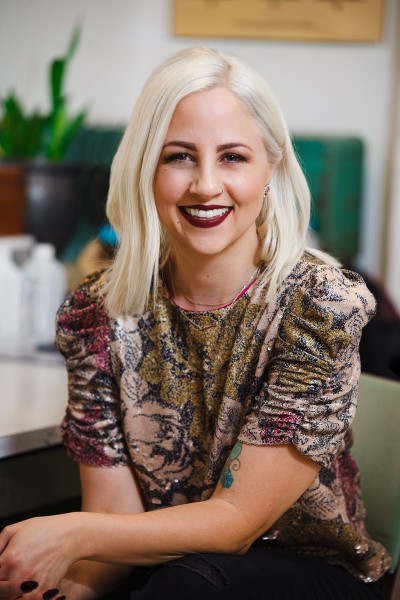Let’s Talk Teledentistry
Share
It should come as no surprise that teledentistry is on the rise during today's climate. With the average number of Google Searches for "teledentistry" hitting an all-time high and the ADA issuing new guidelines for how remote dental visits can be billed - the telehealth industry as a whole is more viable now than ever. But what does that mean for your practice, how easy is it to implement, and how quickly could you get started? We spoke to teledentistry expert, Melissa Turner to learn more.
At a high level, what is teledentistry and why is it so important given the challenges dental offices are facing right now?
On the surface, teledentistry is simply applying the technology we already use everyday in our personal lives to our professional practice. When we think about how much we use the latest technology in our every single day lives--things like the cloud, live video chat, and voice technologies--it makes sense to also apply it to our clinical practice.
Since the Covid-19 shutdown, dental practices have lost their usual form of physical communication with their patients and have instead been forced to find new ways to bring value to their patients and practices. Typically, implementing telehealth services into a dental business would have taken months (or even years) to research and put into action; instead, practice owners have recently been making and implementing these decisions overnight. Forward-thinking dental practice owners have also used this downtime to explore strategies that will connect with their patients in both the short term and long term, after social distancing is no longer recommended.
What does a "typical" teledentistry appointment look like?
Telehealth consists of three types of models: live video (synchronous), store-and-forward (asynchronous), and remote patient monitoring. Dentistry uses live video and store-and-forward services most commonly.
In a typical live video teledentistry encounter, a patient (or a patient + provider) locates at an originating site and engages in a real-time video appointment with a provider at a distant site. Currently and during the Covid-19 shutdown, real-time consultations are the most popular way for dental practices to communicate with a patient.
For a store-and-forward appointment, a provider (usually a dental hygienist or a dental assistant), meets with the patient to collect data, radiographs, intraoral photos/video and assessments. The information is stored on the cloud, allowing a dentist to review the information at a later date. This is the most convenient form of teledentistry as it allows the most flexibility for the dentist’s schedule.
Are there limitations of seeing patients, virtually?
It’s important to state the obvious: Because most clinical dentistry procedures still need to be completed in-person, teledentistry will not replace in-person encounters but will, instead, allow more flexibility for both the patient and provider. For example, imagine the benefits of using teledentistry for a quick, procedural follow-up appointment. By completing the post-op virtually, the patient will not have to take hours off work in order to be in the dental chair for just a few minutes. On the same hand, valuable chair time opens in the dental practice’s schedule, which increases time for more in-person treatment in the daily schedule.
Are there some offices that might get more out of offering virtual appointments than others, or is teledentistry really a good option for everyone across all specialties and geographies?
When considering if teledentistry is right for a dental practice, one must consider the demographics of their patient population, if the partnering third-party payers will reimburse for services, as well as state specific dental rules and regulations. But the bottom line is this--telehealth services are adaptable to many situations and your patients will thank you for implementing them.
Do insurance companies currently reimburse for teledentistry?
In 2018, CDT released two codes for teledentistry encounters-- D9995 (synchronous encounter) and D9996 (asynchronous encounter). It’s important to note that even though you will code out for teledentistry, you will not get paid for these codes. Instead, you will be reimbursed for the procedures you complete during the teledentistry encounters. For instance, if you completed a post-op consultation via live video, you would bill out D9995 in addition to D0171.
Codes D0140 (problem-focused limited oral evaluation) and D0170 (problem-focused limited re-evaluation accessing the status of a previously existing condition) are also commonly used procedural codes in teledentistry encounters that insurers may reimburse.
To learn more about what is possible for you, speak with your partnering third-party payer to see what procedures they are currently reimbursing for. Also take note of state-specific dental guidelines relating to teledentistry, supervision, and procedural definitions.
Finally, what advice would you give dental professionals who have never utilized teledentistry, to get started? What resources would you recommend to learn more?
The great news is it’s never before been easier to implement teledentistry! Whether you are a dentist, dental hygienist, or patient, teledentistry has the chance to enhance how you currently do things, streamlining patient communication and your practice model. The following are a few great resources for those interested in learning more:
- National Mobile Dentistry Conference www.nmdconference.com
- American Mobile Dentistry Alliance www.americanmobiledentistryconference.org
- American Telemedicine Association www.americantelemed.org
- American Dental Association www.ada.org

About the Expert
MELISSA TURNER, BASDH, RDHEP, EFDA, is a valued thought leader, dental advisor, and speaker. With extensive experience within both teledentistry and mobile delivery, she is co-founder of the National Mobile Dentistry Conference and the American Mobile Dentistry Alliance. She is Chief Hygiene Officer at Cellerant Consulting, and is creator of I Heart Mobile Dentistry, a Facebook networking group for clinicians practicing mobile dentistry, Melissa’s passion is to improve the dental experience for patient and provider alike. She can be reached at MelissaTurnerLLC@gmail.com.
